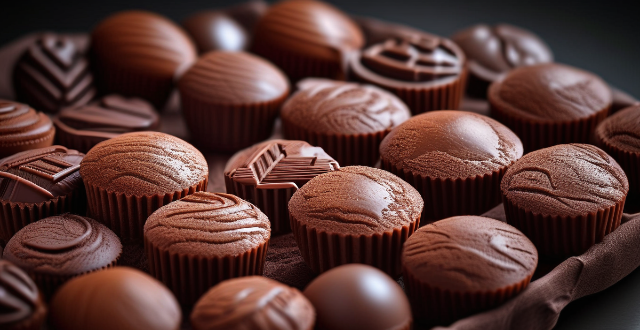The article discusses the importance of chocolate selection in French chocolate desserts, highlighting the use of dark, milk, white, and unsweetened chocolate. It emphasizes the rich culinary heritage of France that demands quality ingredients, especially in chocolate desserts. The article also suggests considering the desired outcome of the dish, taste testing, and experimentation to find the perfect chocolate for a particular dessert.

French Chocolate Desserts: The Chocolate Preference
In the realm of French chocolate desserts, the choice of chocolate is as crucial as the recipe itself. The rich culinary heritage of France demands a certain finesse and quality in every ingredient, especially when it comes to the indulgent world of chocolate. So, what kind of chocolate is typically used in these delectable treats? Let's delve into the specifics.
Dark Chocolate
*The Star Ingredient*
Dark chocolate, with its high cocoa content, is often the star of French chocolate desserts. Its deep, complex flavor profile adds depth to any dish it graces.
- High Cocoa Content: Look for bars that boast at least 55% cocoa content for a rich, full-bodied flavor.
- Single Origin: Some chefs prefer single-origin dark chocolate to highlight specific terroir characteristics from the cocoa beans.
- French Chocolatiers: Brands like Valrhona, Michel Cluizel, and Bernachon are revered for their exquisite dark chocolates.
Milk Chocolate
*A Sweet Touch*
While milk chocolate might not be the first choice for purists, it does bring a sweet, creamy touch to certain desserts.
- Delicate Flavor: Its milder flavor makes it suitable for desserts that require a subtler chocolaty note.
- French Elegance: French milk chocolate, with its high cream content, exudes an elegant richness.
- Complementary Use: Often paired with fruits or used in ganache for a smooth texture.
White Chocolate
*A Creamy Alternative*
White chocolate, though not technically 'chocolate' due to the absence of cocoa solids, has a place in French desserts for its creamy, sweet flavor.
- Creamy Texture: Ideal for mousses and puddings where a smooth texture is desired.
- Flavor Pairings: White chocolate pairs well with vanilla, citrus, and even spices like cardamom.
- Quality Matters: High-quality white chocolate contains a higher percentage of cocoa butter, resulting in a better taste and texture.
Unsweetened Chocolate (Couverture)
*For the Professionals*
Unsweetened chocolate, also known as couverture, is often used by professionals for its versatility and pure chocolate flavor.
- Baking Staple: It's a staple in baking, allowing chefs to control the sweetness level.
- Chocolate Work: Ideal for tempering and creating decorative elements like chocolate shavings or curls.
- Quality Counts: Like with all chocolates, the quality of the couverture can greatly impact the final dessert.
Choosing the Right Chocolate
*It's Personal*
The type of chocolate used in French desserts often comes down to personal preference and the desired outcome of the dish. However, understanding the characteristics of each type can help in making informed decisions.
- Consider the Dish: Is it a complex mousse that would benefit from the depth of dark chocolate, or a simple dessert that could use the gentle touch of milk chocolate?
- Taste Test: Don't hesitate to taste different brands and types of chocolate to find your preferred flavor and texture.
- Experiment: French cuisine encourages creativity. Don't be afraid to mix and match chocolates to create unique desserts.
In conclusion, while dark chocolate reigns supreme in French chocolate desserts for its depth and complexity, other types like milk chocolate, white chocolate, and unsweetened chocolate have their roles to play. The key is to understand the characteristics of each and how they can contribute to the overall flavor and texture of the dessert.